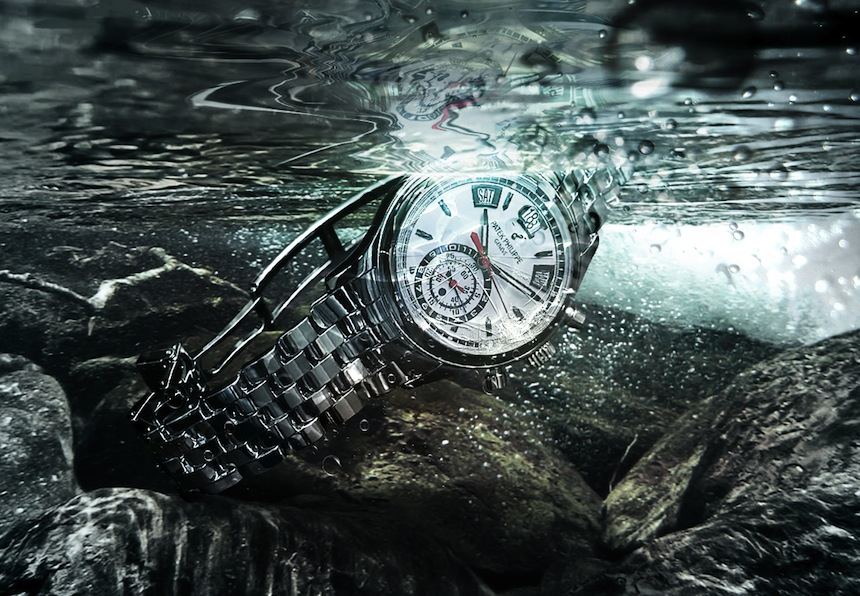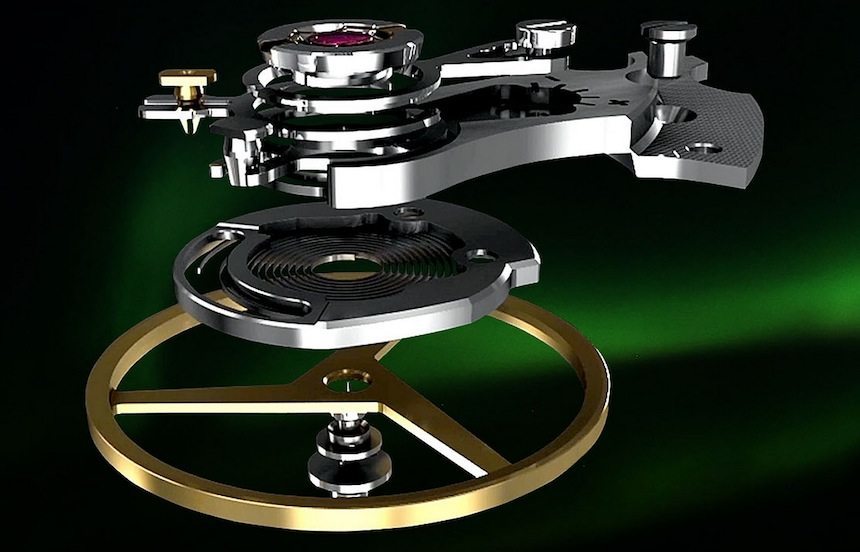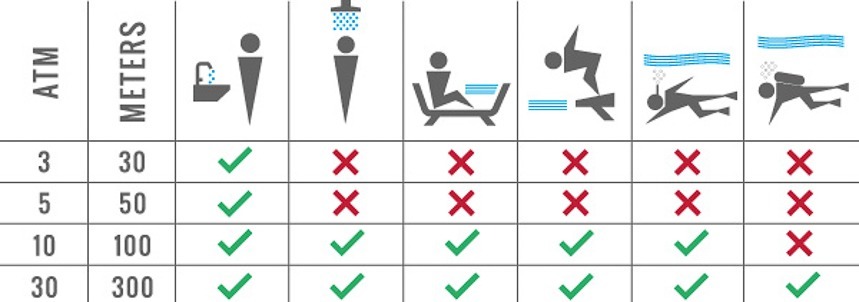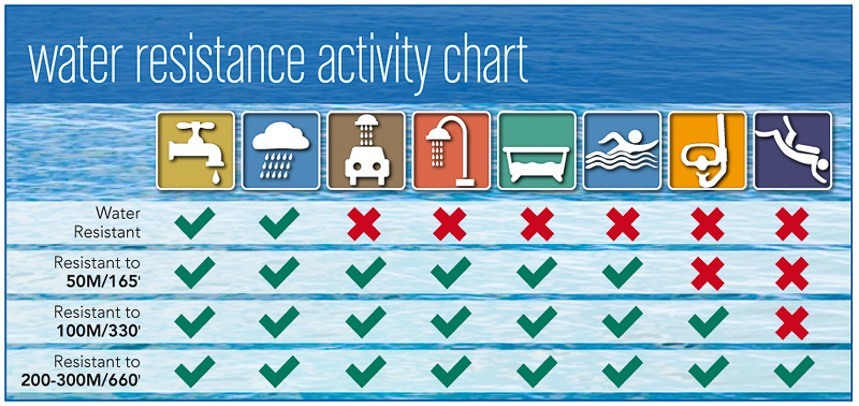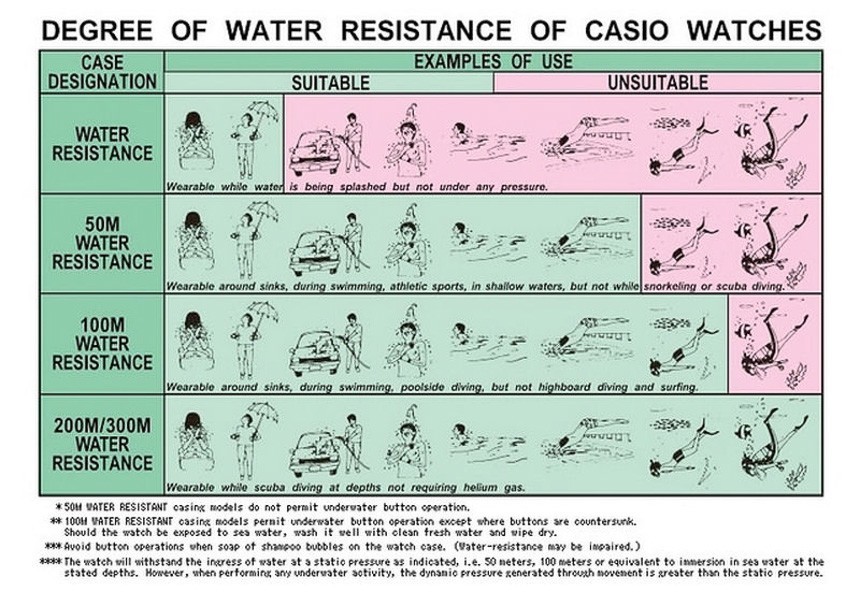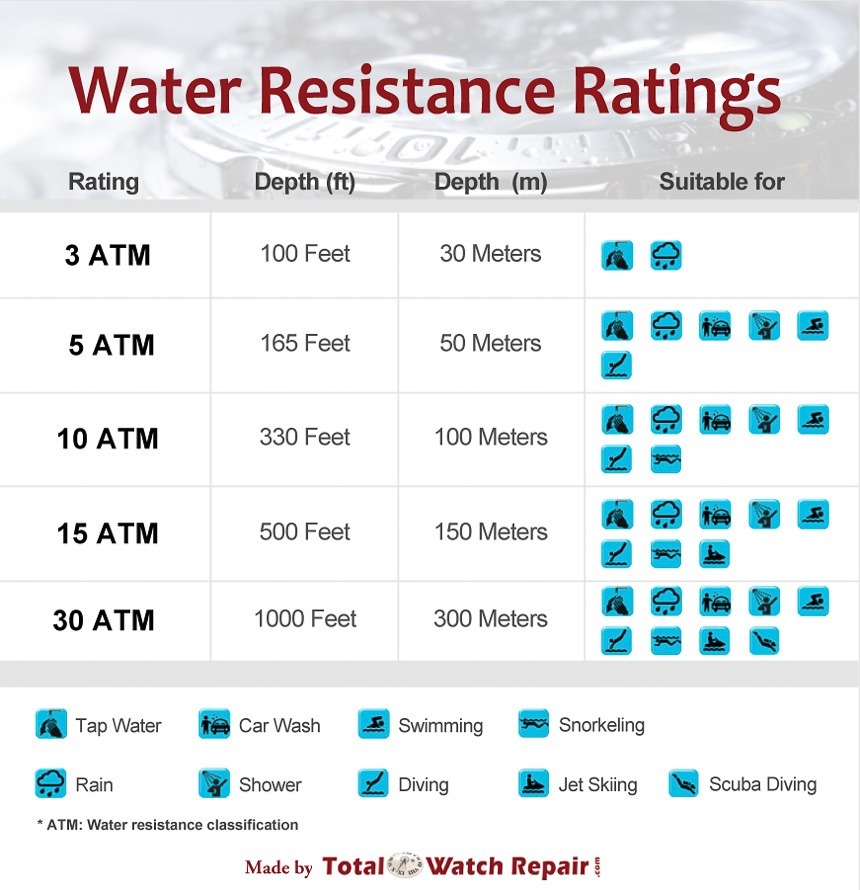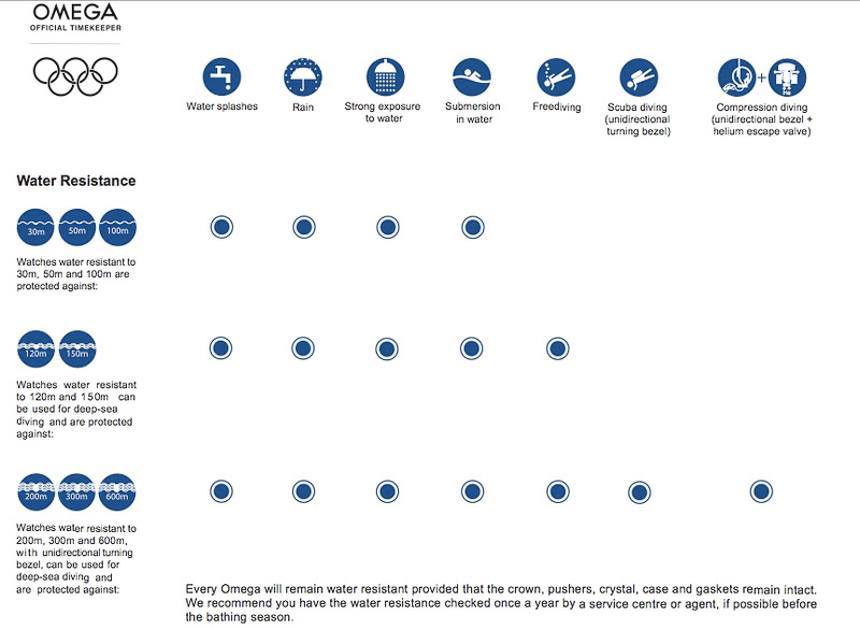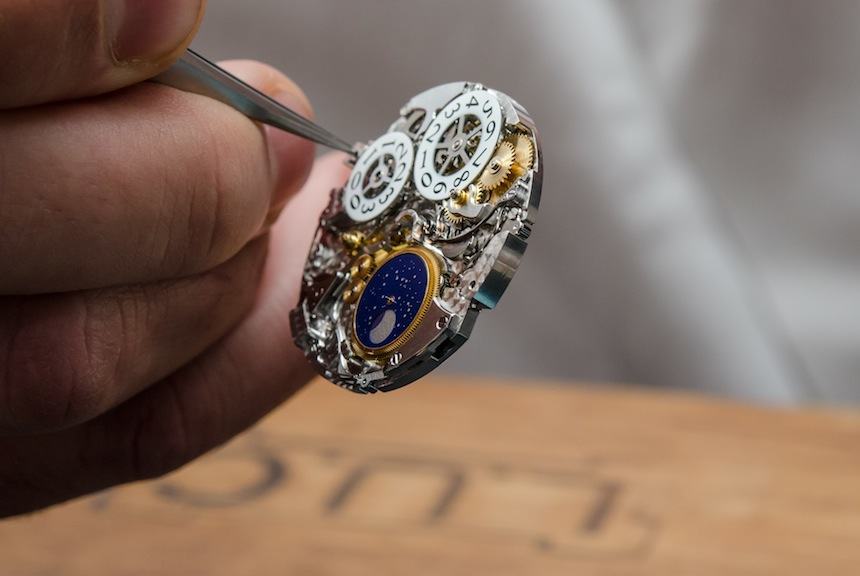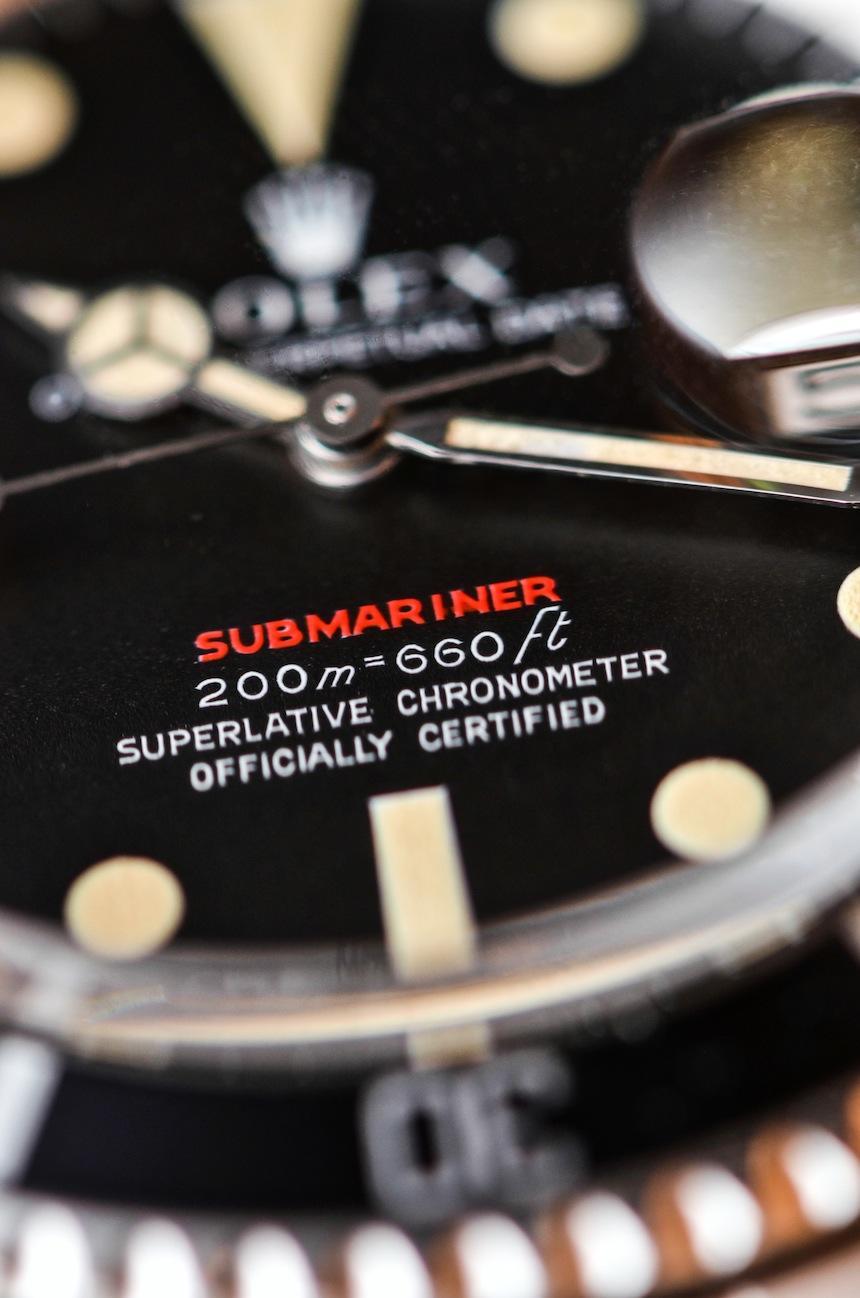
Rolex Submariner 1680 “Red Meters First” with 200 meters of water resistance boldly stated on the dial
At 100 meters of water resistance, the “fun” can start. That means you can go snorkeling and pool swimming with a watch and depending on the model, some light diving. Again, us watch lovers take this for granted, but that is “100 meters” of water resistance. 100 meters is over 300 feet. That is a long way down under water if someone were to take the rating at face value. 200 to 300 meters is a “real” dive watch with the latter being a more appropriate value. Very few actual divers go down to 300 meters, yet that is the rating required for a “real” dive watch. Again, many of you takes these numbers for granted but someone simply reading the back of their watch seeing “50 meters of water resistance” might think “no problem taking that down to 10 meters.”
I have spent so much time talking about water resistance to illustrate the point of how the watch industry itself should be doing more to help educate consumers on how to wear their watches. Someone unfamiliar with high-end timepieces might reasonably believe their new $50,000 watch can put up with anything. Part of the fantasy of luxury watches is the idea that you are buying “more than you need.” It is a sort of personal James Bond story we like to play out that the gear we have looks good and if in a pinch will put up with a lot of abuse. It is for this reason that so many people like wearing diver watches; not because they plan on diving at any given moment, but they like the idea that their watch will put up with water, shock, and falls with ease.
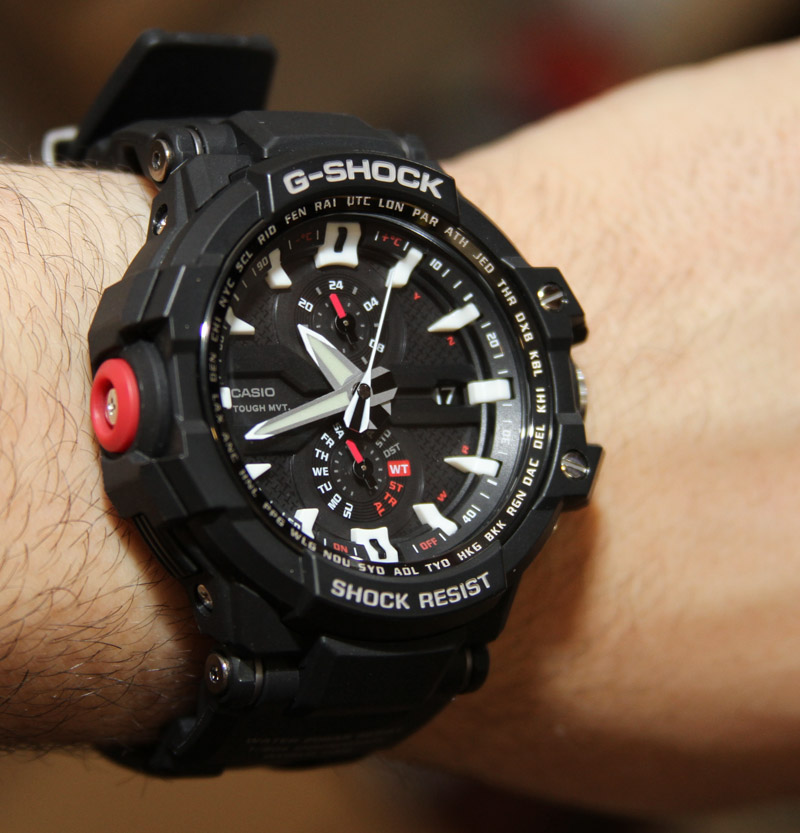
The Casio G-Shock GW-A1000: “Shock Resist” and “Tough Mvt.” are written on the bezel and dial for good reason
Ironically, it is often the cheapest watches that are the most durable these days. If you want an indestructible timepiece I can’t think of anything more available, accessible, or appropriate than a Casio G-Shock. Those are like the cockroaches of the watch world, and I mean that in the best possible way. They will outlive us all. I’ve seen G-Shock watches survive falls from tall buildings, being burnt, frozen, and generally put through hell. No one ever claimed that a G-Shock is a luxury or even fancy watch, but they will likely out do most high-end dive watches.
Part of that is because mechanical movements, no matter how hardy or how well shielded still rely on moving parts that can break if subject to enough shock. Drop a 1000 meter water resistant watch from a building and even if the case and sapphire crystal survive, you’ve probably just ended the life of the movement inside. Remember, even though you want to keep your watch case looking pretty, what is really at issue is what is inside of it.
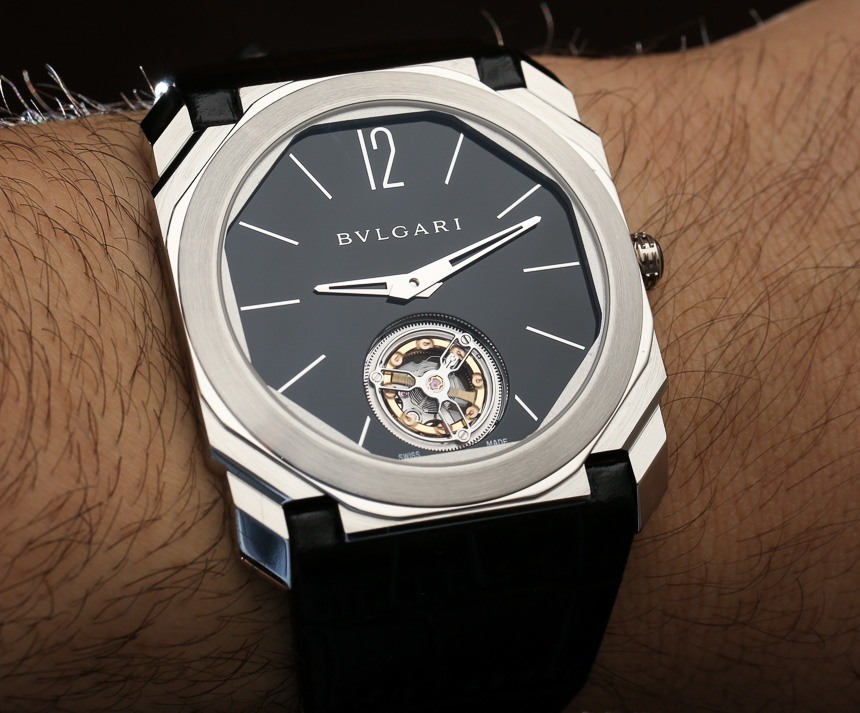
The Bulgari Octa Finissimo: the thinnest tourbillon wristwatch in the world couples a masculine, robust design with a fragile case thickness of just 5 millimeters
The thinner or more delicate looking a watch, the more fragile it is going to be. Does your watch have a complicated movement? Think “very fragile.” One of the reasons that high-end watch makers like to put complicated watch movements into “classic” cases is to help remind people that these aren’t sports watches. The few brands that do put complicated movements into sport watches are probably hoping their customers know enough not to actually do anything sporty with them.
More and more watch brands today are coming out with fancy new pieces of technology meant to keep their watches safe from everyday wear. Just in the last year or so, companies such as Ball have released innovations such as SpringLock to protect against vibrations and Omega has introduced Master Co-Axial movements that are more or less immune to magnetism. These features are great, but by no means exist in all watches with mechanical movements.
I am not trying to suggest that all mechanical movements need to be babied else they will break, but rather consumers with high-end mechanical watches need to appreciate what they are wearing. Anything with moving parts will inherently be more fragile than something without moving parts (such as an all digital quartz watch).
We return to the original question of understanding when to take off your watch and when it is OK to wear. I think the example of shoes is best. Few adults own just one part of shoes. We all have different shoes for different occasions. Dress shoes are going to look the best but not be suitable for sports or the outdoors. Sneakers are going to be the most comfortable but aren’t always going to be the most attractive. Of course there are a range of shoe types in between as well. Think of watches the same way. Try to understand the purpose of your watch and it will help you know under what circumstances you can or should wear it. If you want to go hiking with a watch, then consider how water and dust resistant it is. Does it have a case that will scratch easily? Or, will you mind?
Watch brands are not likely going to step up to the plate and explain what types of places you shouldn’t wear your new expensive watch. Such information is going to ruin the purchase experience for some people or be a buzz kill. I think watch retailers can do a better job, but again, they want to help offer the most pleasant buying experience and preserve the fantasy of the super durable perpetual calendar.
At the least I would like for brands to move to a more “literal” rating system on their watches to help people understand how to wear their watches. “30 meters” should mean 30 actual meters of water resistance. If it is less than it could say “<1 meter.” Watches that are shock resistant, etc… might benefit from having small symbols on the caseback that indicate as such.
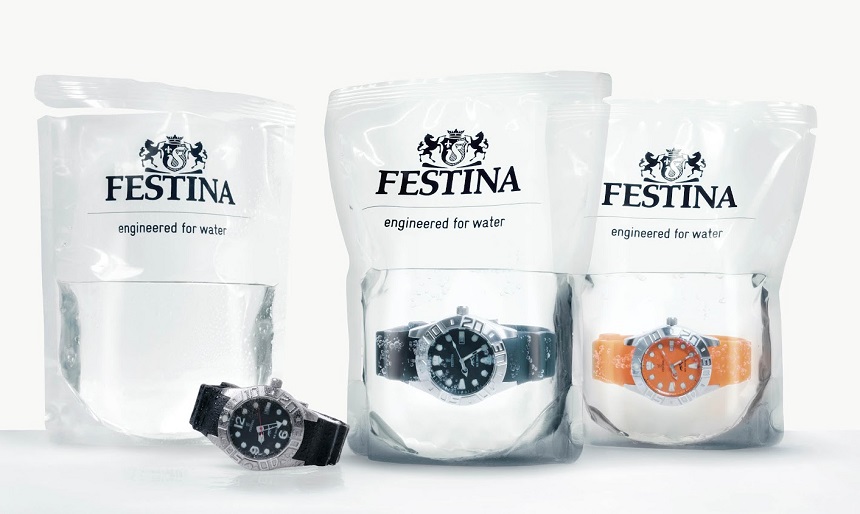
Festina started delivering its Profundo dive watches in sealed bags containing water, as a testament to the water resistance of these models
In the end, I do feel that consumers need to be reasonable with their decisions. I don’t know that it is reasonable to believe that just because something is expensive it is bulletproof. Furthermore, anyone who goes swimming with their new minute repeater watch is just asking for trouble. Then again, I think that minute repeater watches need to be a bit more specific with their actual water resistance ratings.
What do you think? Should watch companies re-evaluate how they label the durability ratings of their watches? Should they educate consumers more? Or are most consumers perfectly aware of how to use their watches, and the few that aren’t, give the rest a bad reputation?

